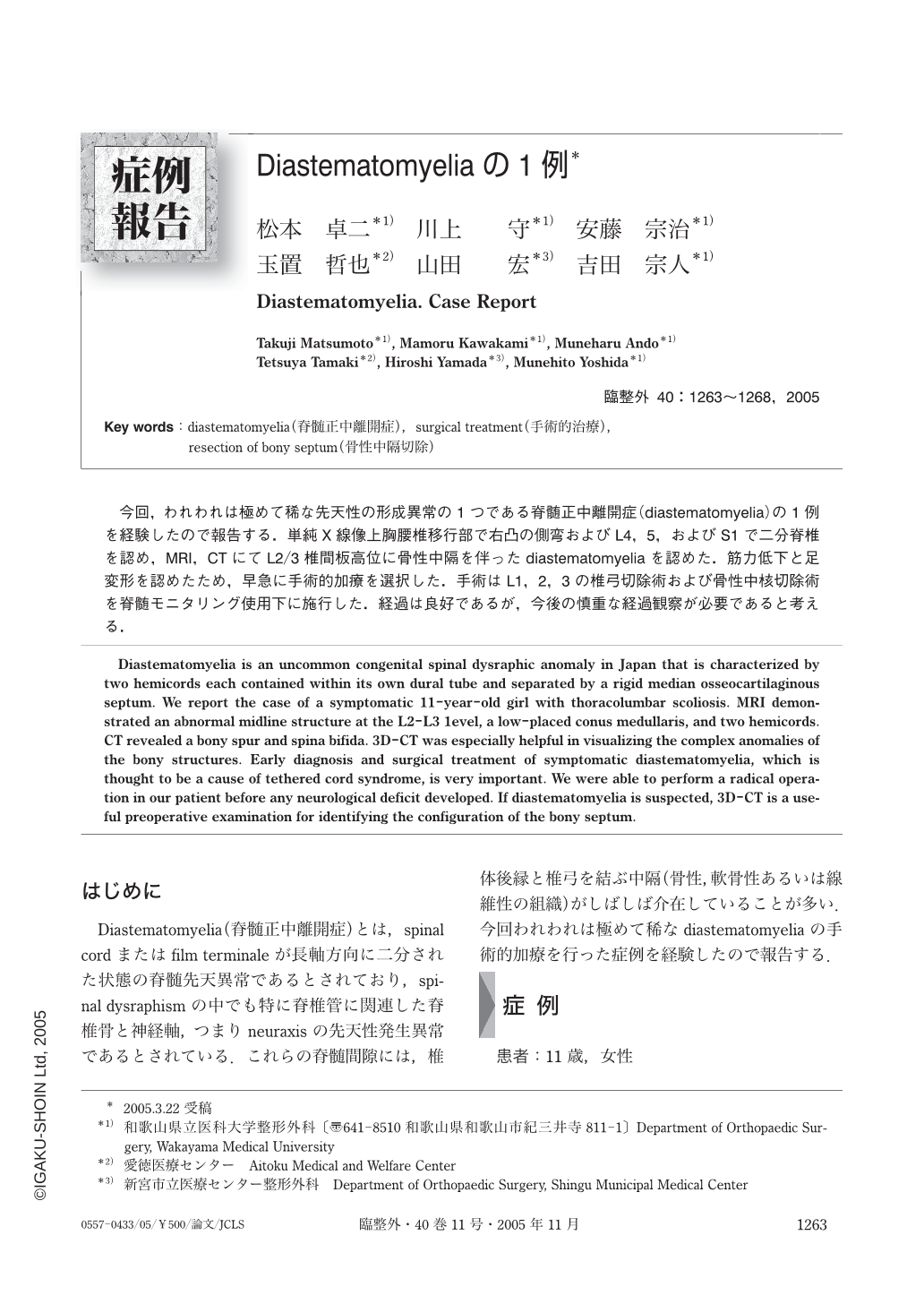Japanese
English
- 有料閲覧
- Abstract 文献概要
- 1ページ目 Look Inside
今回,われわれは極めて稀な先天性の形成異常の1つである脊髄正中離開症(diastematomyelia)の1例を経験したので報告する.単純X線像上胸腰椎移行部で右凸の側弯およびL4,5,およびS1で二分脊椎を認め,MRI,CTにてL2/3椎間板高位に骨性中隔を伴ったdiastematomyeliaを認めた.筋力低下と足変形を認めたため,早急に手術的加療を選択した.手術はL1,2,3の椎弓切除術および骨性中核切除術を脊髄モニタリング使用下に施行した.経過は良好であるが,今後の慎重な経過観察が必要であると考える.
Diastematomyelia is an uncommon congenital spinal dysraphic anomaly in Japan that is characterized by two hemicords each contained within its own dural tube and separated by a rigid median osseocartilaginous septum. We report the case of a symptomatic 11-year-old girl with thoracolumbar scoliosis. MRI demonstrated an abnormal midline structure at the L2-L3 level, a low-placed conus medullaris, and two hemicords. CT revealed a bony spur and spina bifida. 3D-CT was especially helpful in visualizing the complex anomalies of the bony structures. Early diagnosis and surgical treatment of symptomatic diastematomyelia, which is thought to be a cause of tethered cord syndrome, is very important. We were able to perform a radical operation in our patient before any neurological deficit developed. If diastematomyelia is suspected, 3D-CT is a useful preoperative examination for identifying the configuration of the bony septum.

Copyright © 2005, Igaku-Shoin Ltd. All rights reserved.


